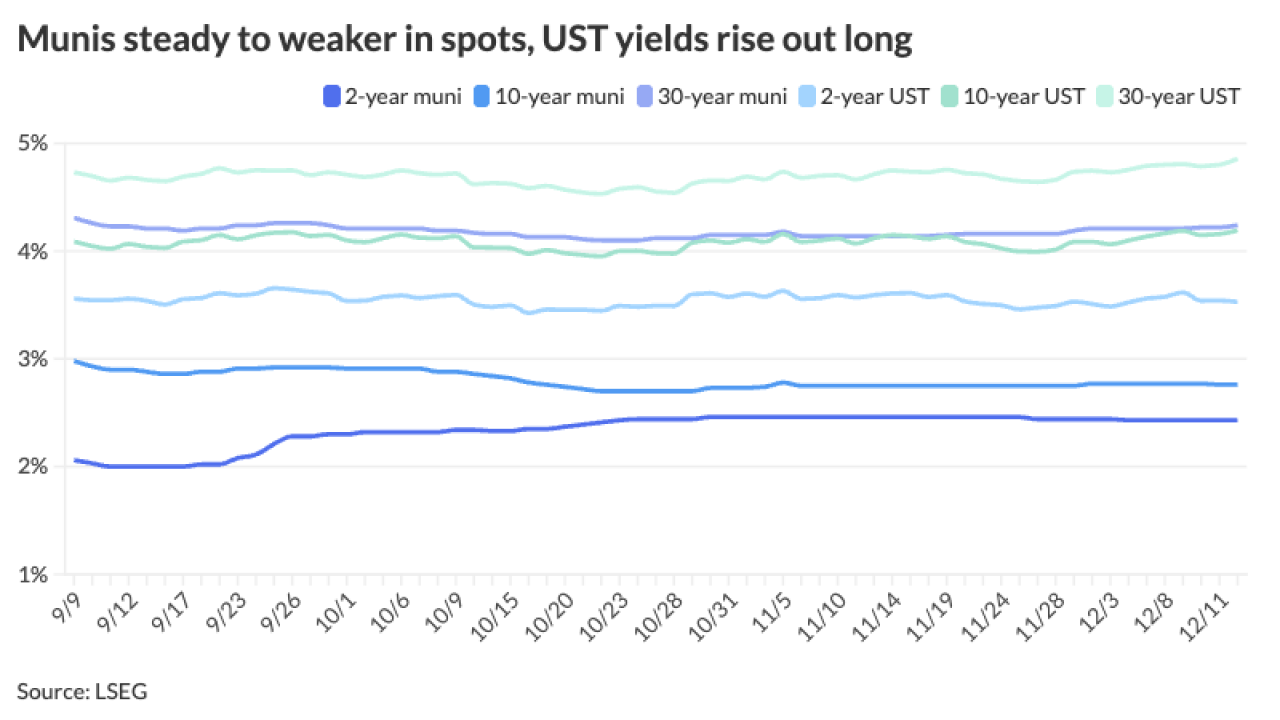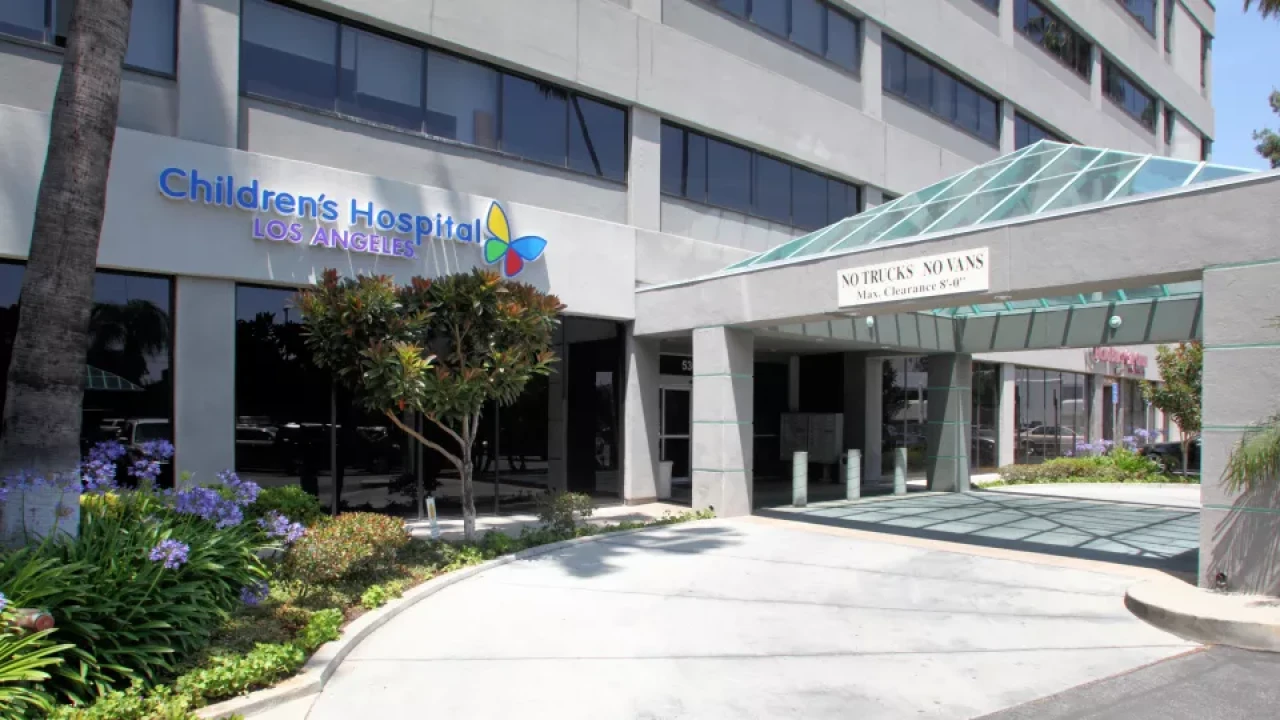
Private developer SR 400 Peach Partners plans to bring $3.5 billion of private activity bonds to market next week to finance an express lane highway project in suburban Atlanta.
The toll revenue bonds, the largest municipal bond deal of the year so far, will be issued through the Wisconsin-based Public Finance Authority.
"This project demonstrates the increased traction managed lanes and P3 projects in general have had in this country. They have really been an increasingly important tool to solve infrastructure and traffic problems," said Dora Lee, director of research and partner at Belle Haven Investments.
The preliminary structure calls for term bonds due in 2060 and 2065. The deal is rated Baa3 by Moody's Ratings and BBB-plus by KBRA.
Georgia's State Road & Tollway Authority and Department of Transportation are public partners in the public private partnership.
SR 400 Peach Partners is a special purpose vehicle formed by ACSInfra, Meridiam, and Acciona to design, build, finance, operate, maintain and toll new managed express lanes along the Georgia State Road 400 highway. Peach Partners will have the right to collect tolls for 50 years.
Bond proceeds will be combined with a $4 billion Transportation Infrastructure Finance and Innovation Act loan to execute the deal and construct 16 miles of express lanes and several access and exit points.
As is common with express lane projects, the tolls will be variable, rising high enough to keep traffic moving freely in the tolled lanes.
The economic condition of the area and regional drivers' willingness to pay tolls is key to understanding the bonds' credit, said John Mousseau, vice-chairman and chief investment officer of Cumberland Advisors. This could be challenged if the economy slows more than expected.
"A generation ago, there was Connector 2000 in South Carolina in the Greenville area – billed as a toll road to relieve congestion," Mousseau said. "It opened in early 2001 but faced much lower-than-expected traffic volumes and
The project will add tolled express lanes to State Route 400 in Atlanta's northern suburbs. Most of the route will consist of two express lanes in each direction running north from the Metropolitan Atlanta Rapid Transit Authority North Springs station, the northern terminus of its rail transit system. The final stretch north will be one lane in each direction.
The project also includes a MARTA bus rapid transit operation using the express lanes to connect with its rail service at North Springs, to be financed with $100 million of state bonds, according to
SR 400 Peach Partners will fund a debt service reserve account for the bonds equal to the amount of the bonds' senior debt service due in the following six months.
"Debt service coverage as contemplated is adequate under a number of scenarios," said John Hallacy, president of John Hallacy Consulting. "Much of the success of the project depends on a successful ramp up of traffic on the asset. It is undetermined how a recession of any kind would affect the ramp up trend." Hallacy noted the bonds have a debt service reserve, a ramp up reserve of $200 million and a contingency reserve of $167 million.
"The investment grade ratings open up the deal to a wider investor base, increasing demand for the deal," Lee said. "The ratings also speak to the experience of the project team and overall economics of the project."
Low-investment grade private activity bonds are commonly used as part of the financing package for large transportation P3s, with examples
KBRA's higher bond rating "shows a belief that construction will be relatively smooth and reasonably within budget," said Joseph Krist, publisher of Muni Credit News. "This project doesn't have some of the negatives we have seen with new toll plans. Yes, it's designed to handle growth but it's not designed to generate it. The toll facilities I've seen that failed were reliant on new real estate development. This serves an established area. The higher rating wins here."
Mousseau said he believes Moody's considers the leverage of the deal more than KBRA.
"I would always trust the more conservative approach. For those who can buy the rating, it will be cheap as heck in my opinion," he said.
"This is a large complex project with many different elements and project phases that are based on reasonable assumptions," Hallacy said. "The bridge work and work along waterways have many inputs that may change over the construction period. The cost of steel is just one element subject to global forces and tariffs."
Krist said the proposed express lanes were an example of a transit project advantaged by having access to right of way. "
The bonds will be issued with a $3.5 billion par amount and $104.7 million of original issue premium, according to the investor presentation. While interest is to be paid through 2031, toll revenues won't be used to pay interest until 2031. Other sources will be used for the first five years. Principal is to be set aside starting in 2056.
The developer is promising not to increase senior-level borrowing for the project beyond 10% of the original aggregate principal amount of the Series 2025 bonds.
JP Morgan Securities and RBC Capital Markets are the joint bookrunners, according to an online investor presentation about the deal. KeyBanc Capital Markets is co-underwriter.
Bond counsel Orrick, Herrington & Sutcliffe said income from bonds' interest is subject to alternative minimum tax federal tax. Bond interest is not exempt from state taxes in Wisconsin, where the issuer is based, Orrick said in the POS.
The bonds are eligible for redemption at par on June 30, 2035.

Moody's said it was giving the same Baa3 rating and stable outlook to both the bonds and TIFIA loan despite the fact the bonds are senior debt and the federal loan subordinate because the loan has a "springing-lien" provision in case of a bankruptcy related event, which would make the loan parity debt.
Moody's said its rating reflected an expectation of adequate financial performance under the lender's low case scenario, with total debt service coverage ratio averaging 1.6 ties during the 10 years following the initial five years of operations. The rating is supported by robust reserve requirements after construction completion, Moody's said.
"While construction risks are elevated due to the project's large scale and complexity with $4.7 billion in construction costs, the experience of the contractor, the security during construction and the committed equity owners help mitigate numerous construction risks," Moody's said.
Moody's Baa3 rating also reflects "the project's high leverage, driven by a historically large upfront concession payment of nearly $4 billion to [the State Road and Tollways Authority] at financial close [in August.] Additional payments for SRTA are scheduled between 2037 and 2036 but are subordinated to debt service and senior to equity distribution," the ratings agency said.
Finally, the rating is influenced by the project's "relatively aggressive toll revenue forecast, which assumes stronger pricing power — based on data available which was not available at the time of prior transactions — than seen in prior transactions," Moody's said.
In explaining its BBB-plus rating, KBRA noted the availability of liquidity to withstand a contractor replacement scenario and continued regional population and employment growth that supports the project's ability to meet debt service obligations. A KBRA project risk score of average and senior average debt service coverage ratio of 5.57 times are sufficient to support a BBB-plus ration on the bonds, it said.
"Construction risk, as well as the back-ended amortization profiles on both the private activity bonds and the TIFIA loan limit the ratings to their current categories," KBRA said.
"The split ratings highlight the need for investors to do their own due diligence and decide for themselves how to weigh the risks of projects," Lee said. "Ratings agencies just rate the bonds. They don't have to own the bonds."
On the use of Wisconsin's PFA for a deal that doesn't affect Wisconsin, Mousseau said the PFA "was set up to serve as a conduit issuer for large scale issues. These tend to be riskier deals and doing it this way shields state and local governments from the liability headline risk (in theory)."





